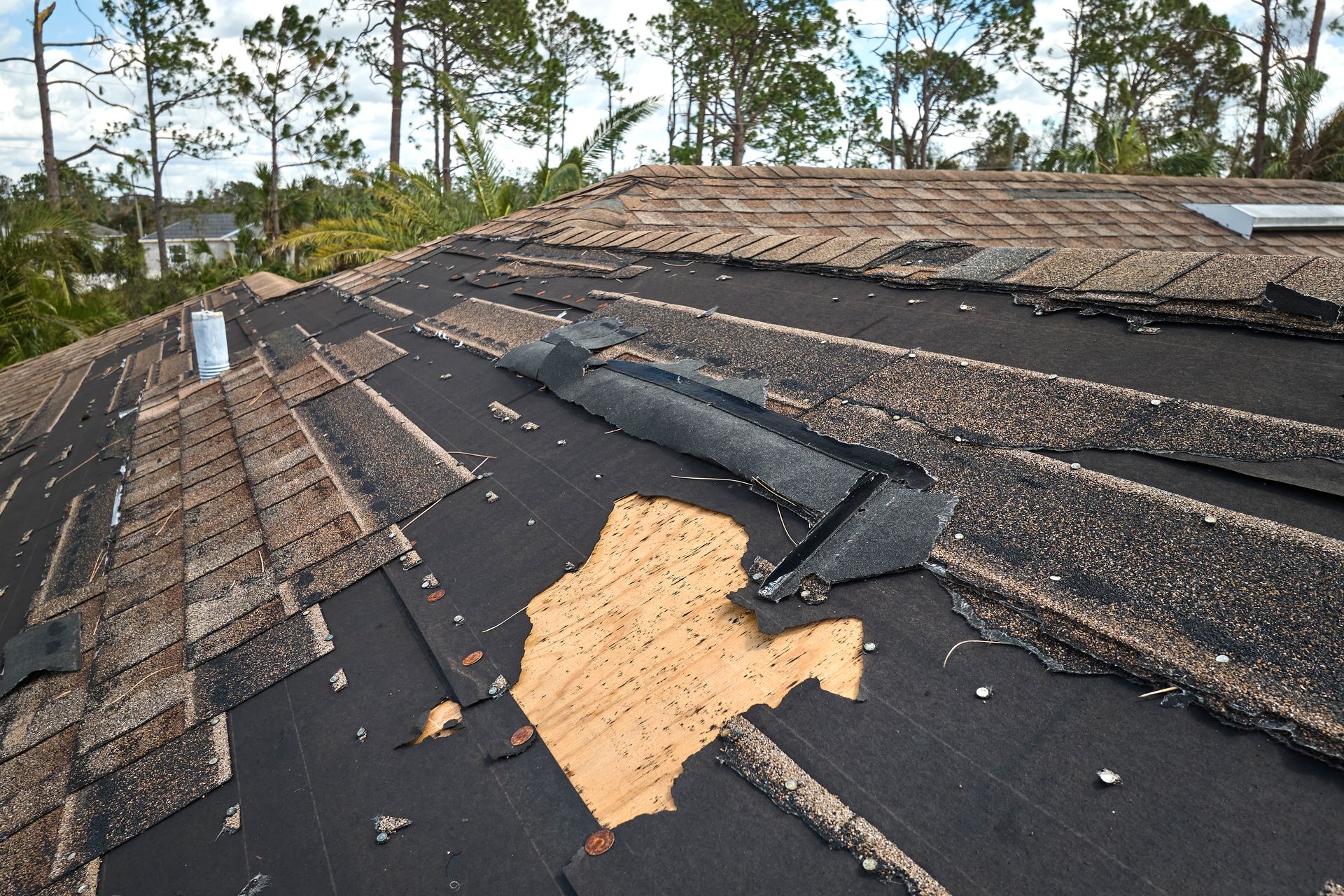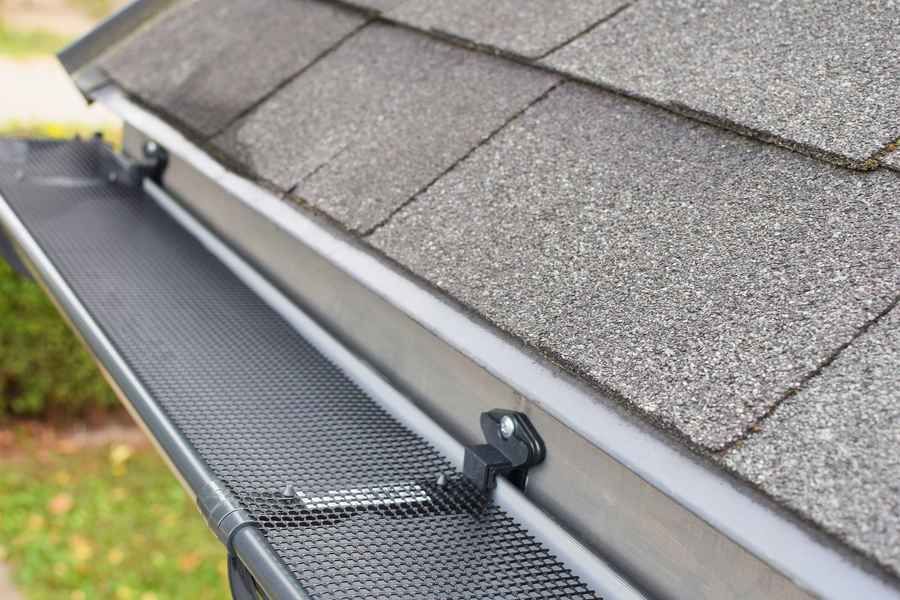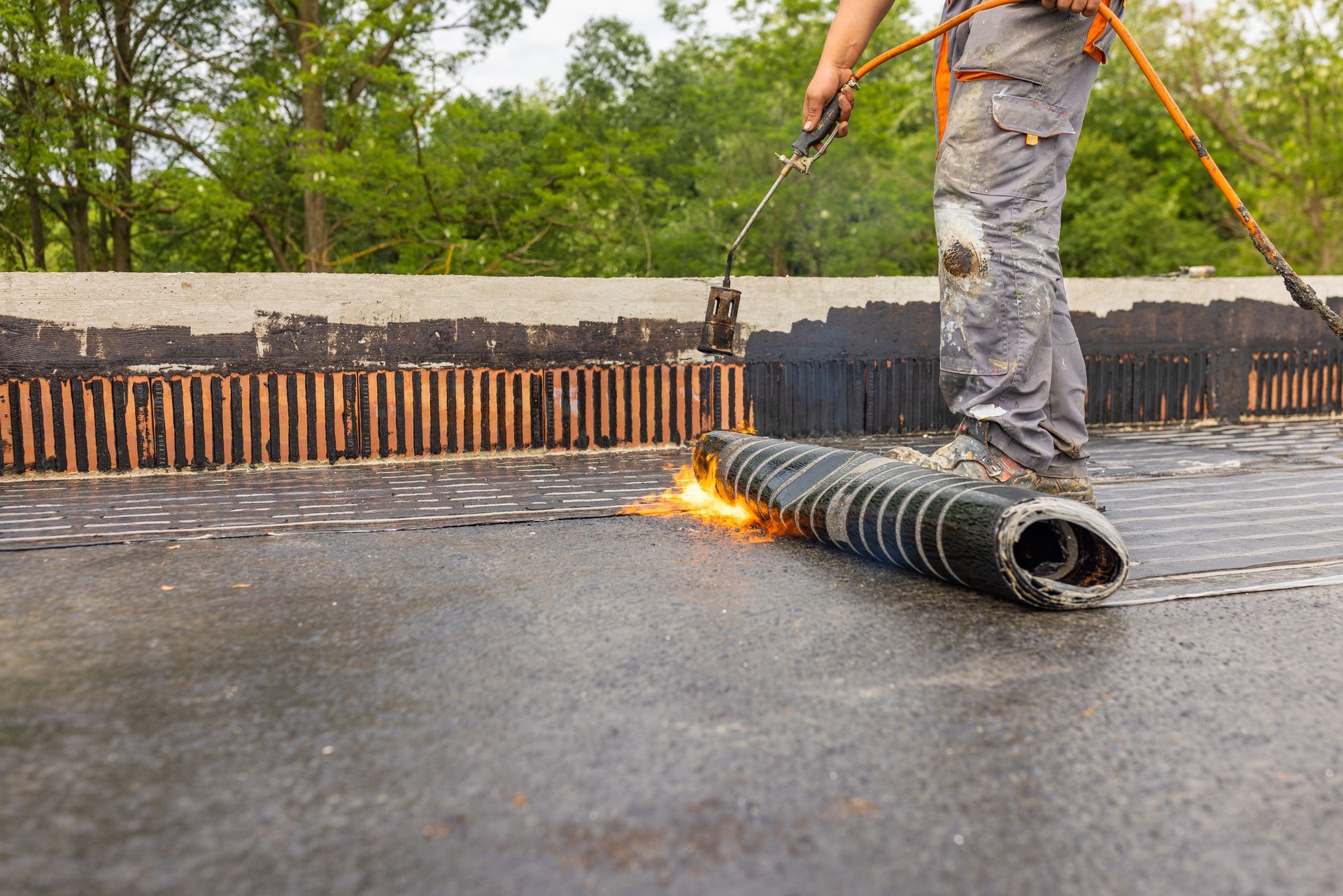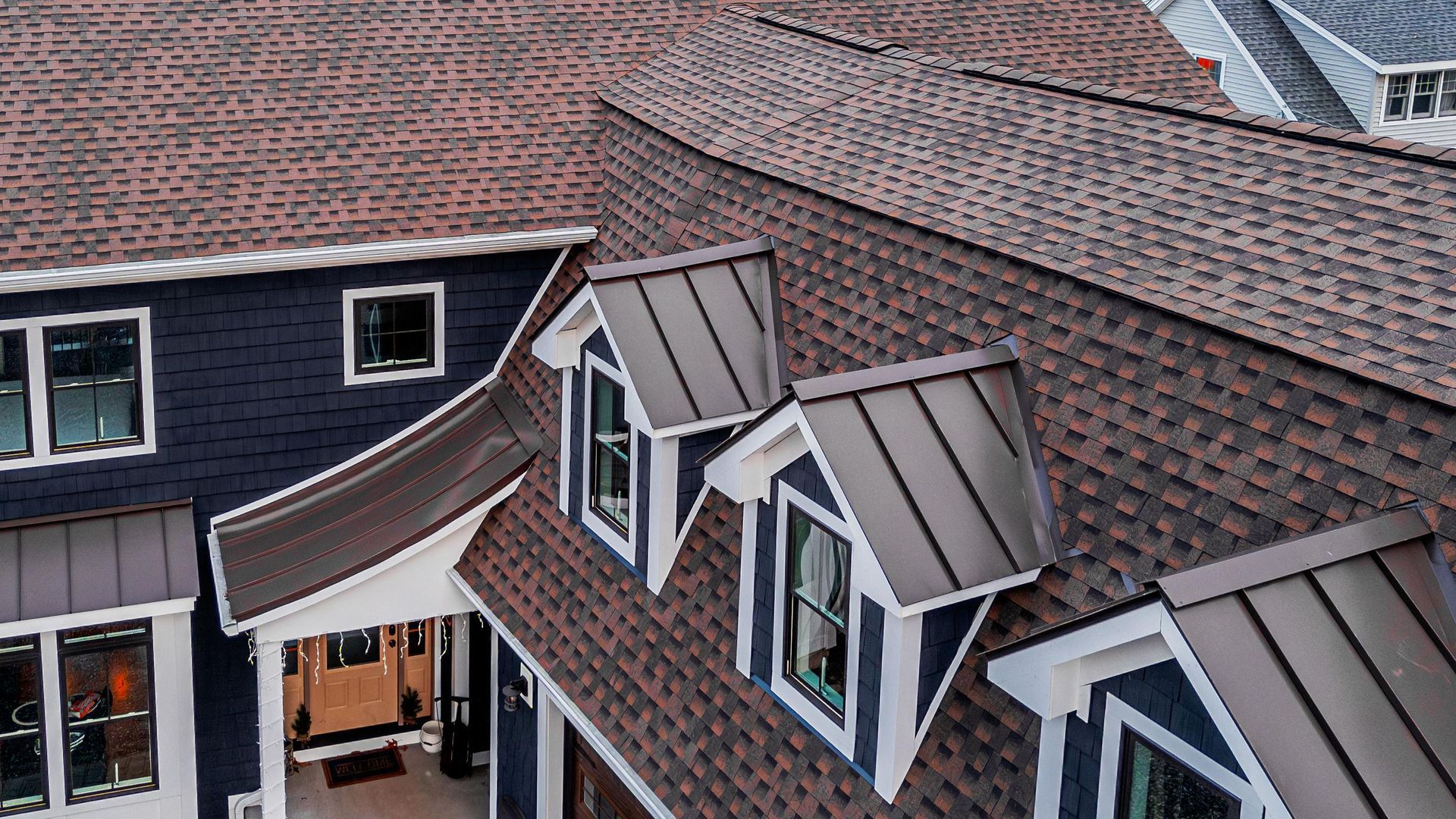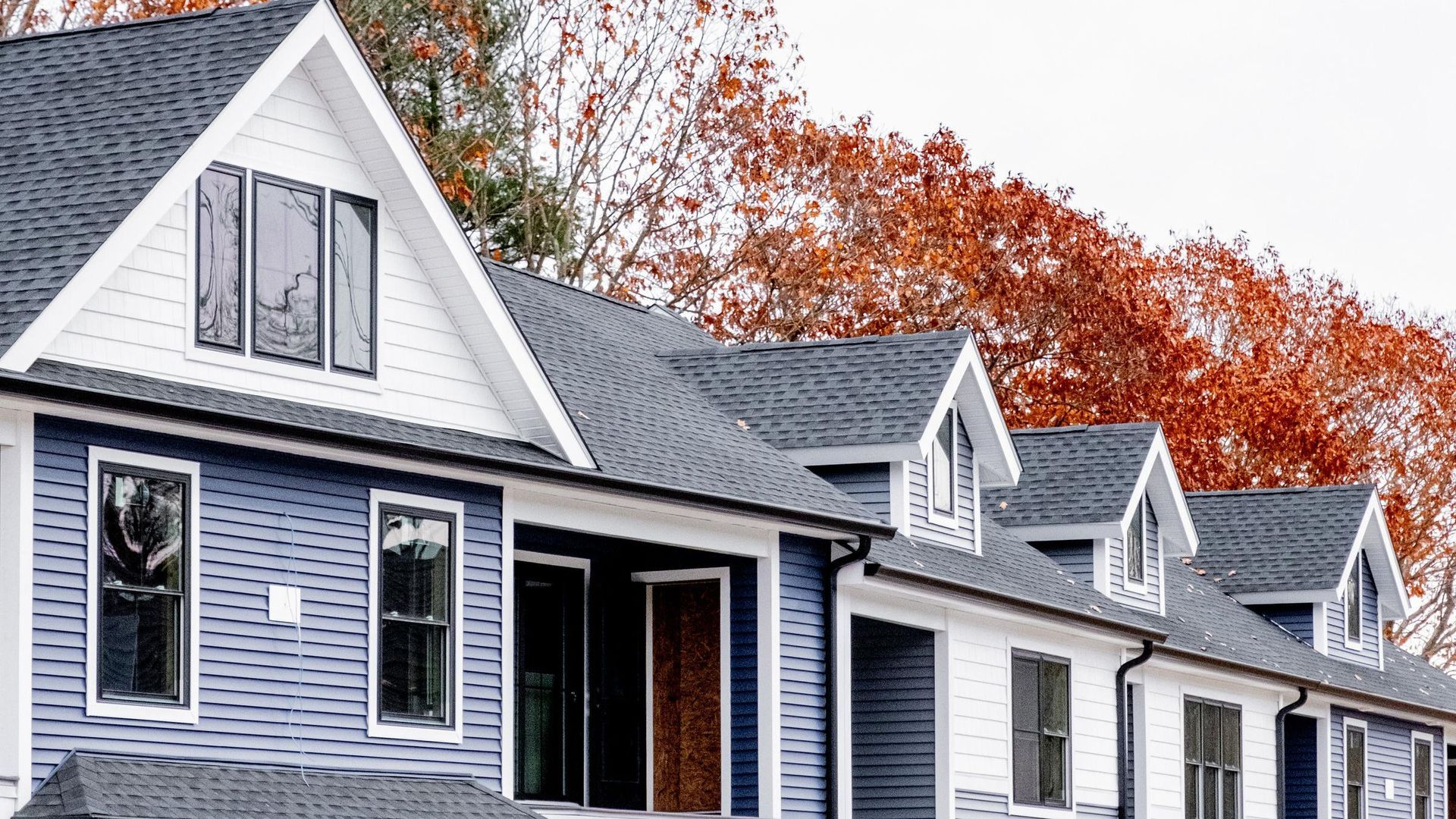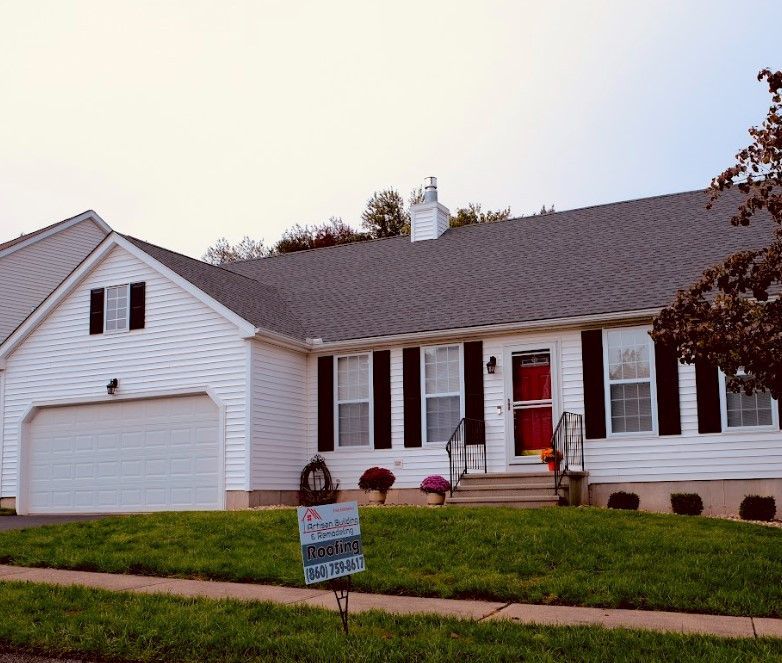The Ultimate Guide to Roofing for New Construction
December 2, 2024
Planning a new building? This guide to roofing for new construction covers choosing materials, coordinating with contractors, and key installation steps.
Key Takeaways
- New construction roofing requires meticulous planning and coordination to ensure compatibility with building design, resulting in enhanced durability and structural integrity.
- Choosing appropriate roofing materials is critical, as factors such as durability, energy efficiency, maintenance needs, and local climate influence the decision.
- Hiring professional roofing contractors is essential for safe installations, adherence to building codes, and ensuring the longevity of the roofing project.
The Ultimate Guide to Roofing for New Construction
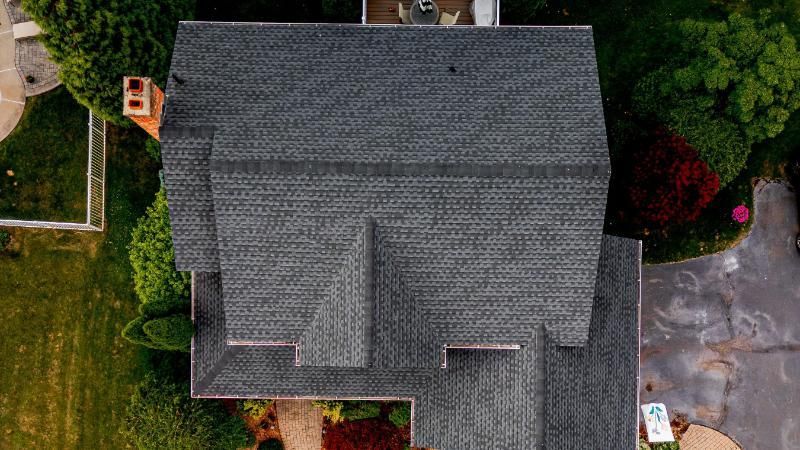
New construction roofing involves installing roofing materials on new structures, requiring a more detailed plan than roof replacement. It integrates seamlessly with the building’s design and architecture, ensuring compatibility and structural integrity for a more durable and resilient new construction roof.
New construction roofing is complex and often more costly due to meticulous planning and coordination with other construction tasks. Its benefits, including enhanced durability and a perfect match with the new building, make it a worthwhile investment. Early coordination with building contractors helps address potential issues and ensures project quality.
Key steps in new construction roofing include framework, underlayment, and roofing covering installations. Each task requires precision and expertise to create a functional and aesthetically pleasing roof. A detailed plan and collaboration with experienced professionals ensure a durable roof that complements the building.
Introduction
Roofing is not just about putting a cover on top of a building; it is a crucial element that protects the structure from weather elements and significantly influences its aesthetic appeal. For both homeowners and construction professionals, having a comprehensive understanding of roofing is invaluable. It helps in making informed decisions about the selection, installation, and maintenance of roofs, ensuring that the final outcome is both functional and visually appealing.
This guide explores roofing materials, designs, installations, and emerging trends. It aims to provide valuable insights to help you choose the best solution for your construction project.
Whether enhancing your home’s energy efficiency or ensuring your commercial building’s longevity, this guide equips you with the knowledge to meet your roofing needs.
Understanding New Construction Roofing
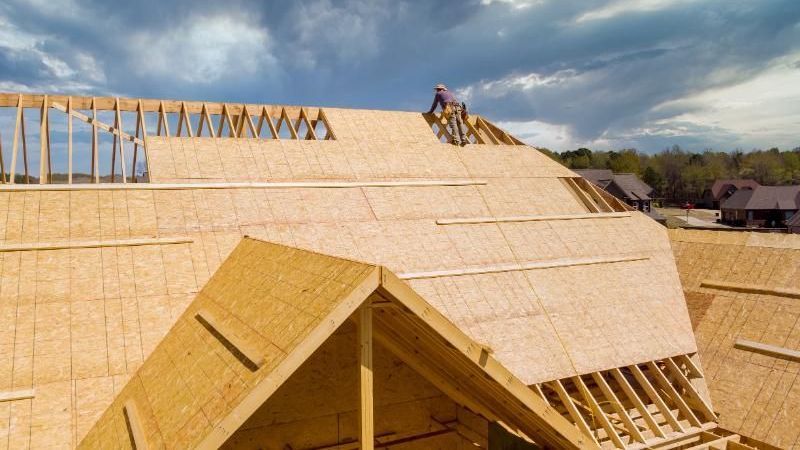
New construction roofing involves installing roofing material on a newly built structure, requiring a distinct approach from roof replacement. Integrated into the building’s design, it ensures compatibility, structural integrity, and durability.
Early coordination with building contractors helps identify and resolve potential issues, ensuring optimal installation. Though complex and potentially costlier, new construction roofing offers benefits like compatibility with the building and enhanced durability, making it a valuable investment.
Recognizing these differences is vital for anyone involved in a construction roofing project.
Key Considerations for New Construction Roofing
A well-planned new construction roofing project is crucial for ensuring compatibility with the overall structure. Successful new construction roofing necessitates detailed planning, coordination with contractors, and a clear understanding of the project requirements. It is essential to obtain the necessary permits. Ensuring compliance with building codes can help avoid delays and potential fines.
Choosing appropriate roofing materials is essential, as they vary in durability, maintenance needs, and energy efficiency. The right material enhances both the roof’s durability and the building’s aesthetic appeal. Considering local building codes and permits ensures compliance and avoids legal issues.
Warranties from manufacturers and contractors protect against defects and poor workmanship, offering peace of mind. Careful planning and consideration of these factors ensure a smooth and successful roofing project.
Choosing the Right Roofing Material

Choosing the right roofing material is critical for the success of a new construction project. Consider initial installation costs, maintenance expenses, and local climate to ensure material longevity. Some materials perform better under specific weather conditions.
Cost and durability are key factors when choosing roofing materials. Durable options, such as slate or metal, can significantly outlast cheaper alternatives like asphalt. Metal roofing, for instance, is recognized for its durability and energy efficiency, making it suitable for various new construction applications. However, it has limitations, including relatively high costs and potential noise levels.
Some roofing materials need specialized installation and maintenance, affecting practicality. Consulting a professional roofing contractor ensures all factors are considered and the best materials are selected for your project.
The New Construction Roofing Process
A new construction roofing project starts with a detailed inspection of the building envelope, analyzing the planned construction roof type and roofing system. This includes examining the deck, insulation, and covering to ensure a reliable and long-lasting roof.
A project manager oversees the roofing project, coordinating teams to ensure smooth execution. Installation duration varies, typically taking one day to a week. Key steps include preparing roof decking, installing flashing, and adding starter shingles for enhanced weather protection.
The final step involves thorough clean-up to ensure the area is safe and tidy. Post-installation, an inspection determines if roofing needs were met. Effective coordination and communication among team members facilitate smooth progress.
Residential vs. Commercial New Construction Roofing
Residential and commercial roofing projects differ in materials, design, and regulations. Residential roofs often use asphalt shingles or metal, while commercial roofs typically feature EPDM rubber and TPO. Commercial roofs are designed to endure heavier foot traffic and accommodate equipment, requiring different durability standards in construction roofing projects.
Residential roofing emphasizes aesthetic variety with pitched designs, while commercial buildings roofing typically consists of flat roof or low-sloped structures for practical uses. Both must comply with local building codes, but commercial projects often face stricter regulations due to their scale.
The installation and maintenance of commercial roofs are more complex, requiring specialized techniques.
Common Challenges in New Construction Roofing
Weather delays pose significant challenges in new construction roofing, as suitable conditions are crucial for task completion. Another common issue is improper framing, including incorrectly angled Bird’s Mouth cuts and unsupported roof sheathing.
Early coordination with building contractors helps identify and resolve potential issues. Promptly addressing these challenges ensures smooth progression of the roofing project.
By anticipating and managing these common challenges, you can avoid delays and complications in your roofing project.
Energy Efficiency in New Construction Roofing
Modern roofing materials improve energy efficiency through better insulation and ventilation. Light-colored materials reduce heat absorption and lower cooling costs in warmer climates. Proper attic ventilation prevents heat buildup, enhancing heating and cooling efficiency.
Reflective shingles decrease the need for air conditioning by reflecting sunlight and minimizing heat gain. Choosing energy-efficient materials and ensuring proper ventilation significantly improve the energy efficiency of your roofing project.
The Importance of Hiring Professional Roofing Contractors

Hiring professional roofing contractors mitigates safety risks and ensures adherence to building codes. Professional contractors are trained and equipped to handle hazardous tasks, bringing extensive experience and knowledge of various roofing systems for quality installations.
Reliable contractors offer expertise, attention to detail, and a customized approach to roof installation and roofing projects. Hiring experienced professionals is crucial, as proper installation affects roof performance and longevity.
Choosing the right contractor ensures a safe, high-quality roofing project that meets all necessary standards.
Additional Roofing Services
Roofing companies offer additional services that promote the longevity and performance of your roof. Additional services include gutters, siding, skylights, maintenance, repairs, solar energy solutions, and lightning protection. Proper gutter installation prevents drainage and foundation issues, maintaining the roofing structure’s integrity.
These construction roofing services are essential for maintaining roof health over time, making them valuable for any new construction project. Utilizing these services enhances the roof’s functionality and durability.
Cost Considerations for New Construction Roofing
The cost of new construction roofing is influenced by material choice, roof complexity, size, and regional labor rates. Larger roofs require more materials and labor, increasing costs. Different materials have varying costs and lifespans, affecting overall expenses.
Labor costs fluctuate based on project complexity and local market conditions. A roof’s design complexity, including slope and features, can increase material and labor costs. A comprehensive budget, including materials, permits, and potential unexpected costs, is essential for roof planning.
Budgeting for unexpected expenses helps manage potential overruns. Carefully reviewing roofing estimates ensures they include all necessary items and services, helping you avoid surprises and stay within budget.
Contacting a Reliable Roofing Company

Selecting a reliable roofing company is crucial for your project’s success. Choose companies with a physical location and local phone number to ensure they understand local regulations. Seek recommendations from friends and family for trustworthy insights.
Look for roofing companies offering a workmanship warranty of at least ten years, indicating confidence in their work. Also, check for certifications from shingle manufacturers, which indicate quality service.
Following these tips will help you select the right contractor for your roofing needs.
Summary
In conclusion, new construction roofing is a complex but rewarding process that requires careful planning, coordination, and the right materials. By understanding the key considerations, choosing the appropriate roofing material, and hiring professional contractors, you can ensure the success of your roofing project.
The insights provided in this guide will help you navigate the complexities of new construction roofing, from planning and material selection to installation and maintenance. Armed with this knowledge, you can confidently embark on your roofing project and achieve a durable, aesthetically pleasing, and energy-efficient roof.
Frequently Asked Question's
About New Construction Roofing
What is new construction roofing?
New construction roofing refers to the installation of roofing materials on newly constructed buildings, ensuring a cohesive integration with the overall architectural design.
Why is coordination with building contractors important in new construction roofing?
Coordination with building contractors is crucial for identifying and resolving potential issues early, which leads to optimal installation and prevents delays in the roofing process.
What factors should I consider when choosing roofing materials?
When choosing roofing materials, it is essential to consider initial installation costs, maintenance expenses, local climate, durability, and aesthetic appeal to ensure a suitable and lasting choice. Making informed decisions based on these factors will lead to a successful roofing project.
What are common challenges in new construction roofing?
Common challenges in new construction roofing include weather delays, improper framing, and the need for coordination with other construction tasks. These factors can significantly impact project timelines and overall quality.
Why should I hire professional roofing contractors?
Hiring professional roofing contractors is essential as they provide expertise, ensure safety, and adhere to building codes, resulting in a high-quality and compliant roofing project. This guarantees peace of mind and longevity for your investment.
Share this Post
